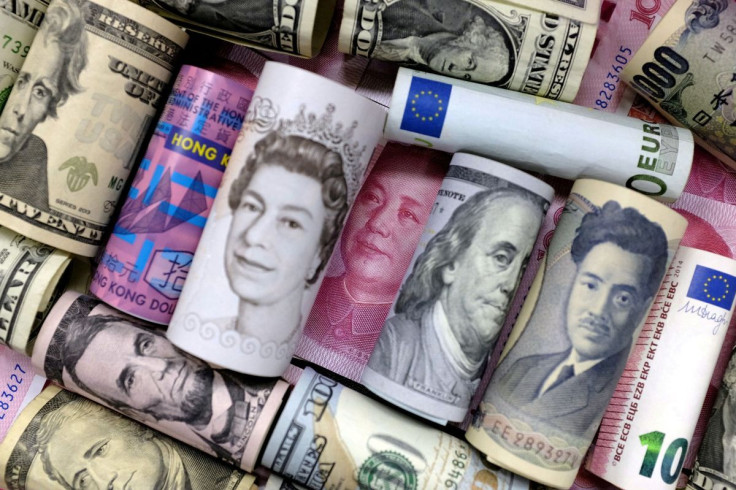Dollar Rally Stalls As Risk Appetite Returns

The dollar eased for a third straight day on Tuesday, pulling back from a two-decade high against a basket of major peers, as an uptick in investors' appetite for riskier bets diminished the U.S. currency's safe-haven appeal.
Upbeat earnings views from Home Depot and United Airlines along with optimism around the easing of China's crackdown on tech and COVID-19, helped to lift risk sentiment.
The U.S. Dollar Currency Index, which tracks the greenback against six major currencies, was down 0.7% at 103.39, its lowest since May 6. The index hit a two-decade high last week supported by a hawkish Federal Reserve and worries over the global economic fallout from the Russia-Ukraine conflict.
"The mood in markets has improved dramatically relative to last week with most asset classes bouncing and retracing the moves seen last week," Brad Bechtel, global head of FX at Jefferies, said in a note to clients.
"The result is a rally in equities and sell-off in fixed income with nearly every currency in the world rallying against the USD," Bechtel said.
The dollar remained subdued after data showed U.S. retail sales increased solidly in April as consumers bought motor vehicles amid an improvement in supply and frequented restaurants, showing no signs of demand letting up despite high inflation.
Fed speakers on Tuesday, including Chairman Jerome Powell at 1800 GMT, will be closely watched for any clues about whether near-term rate expectations could become even more aggressive.
GRAPHIC: Buck takes a breather:

The euro was up 1.05% at $1.0541, extending its rebound from a five-year low touched last week, and putting more distance between the common currency and parity with the U.S. dollar.
The currency, which benefited from ECB policymaker Francois Villeroy de Galhau saying on Monday that a weak euro could threaten price stability in the currency bloc, rose after hawkish comments from Dutch central bank chief Klaas Knot.
Knot said that not only was the European Central Bank set to hike rates by 25 basis points in July, it was also ready to consider a bigger rise if inflation proved higher than expected.
"We think the euro sell-off is starting to look stretched," said Shaun Osborne, chief currency strategist at Scotia Bank.
Sterling also took advantage of the softer dollar to jump 1.29% to its highest level since May 5 after strong labour market data reinforced expectations that the Bank of England would continue to raise rates to fight inflation.
The Australian dollar, viewed as a liquid proxy for risk appetite, rose 0.73%.
Australia's central bank considered a sharper rise in interest rates at its May meeting, minutes published on Tuesday showed, in a heavy hint it will hike again in June.
The Chinese offshore yuan gained 0.8% after a steep slide that has knocked it about 7% lower since mid-April.
Shanghai logged three consecutive days with no new COVID-19 cases outside quarantine zones on Tuesday, a milestone that in other cities has signalled the beginning of lifting restrictions.
Meanwhile, bitcoin, the world's largest cryptocurrency, was up 2.23% at $30,497.41, as it continued to steady after dipping below the $30,000 level last week.
© Copyright Thomson Reuters 2024. All rights reserved.





















